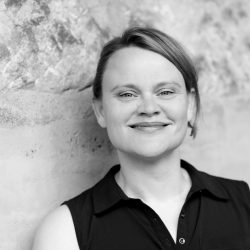
ULRIKE MUNDT
...Page is loading...

Beijing, China
Although Ji Dachun’s his works occupy a special role in a Chinese context, he has created his own personal aesthetic in a seemingly playful way.
The past and the present that interest him refer to the experiences of the individual and not a society’s political situation. With his bizarre, primarily figurative scenes, he has invented an inimitable pictorial language, while his figures embody a new brand of the traditional literati...
Although Ji Dachun’s his works occupy a special role in a Chinese context, he has created his own personal aesthetic in a seemingly playful way.
The past and the present that interest him refer to the experiences of the individual and not a society’s political situation. With his bizarre, primarily figurative scenes, he has invented an inimitable pictorial language, while his figures embody a new brand of the traditional literati painting that attains to the Asian ideal of a spiritual image of man. During his studies, Ji Dachun closely investigated western modernism and contemporary painting, including Piet Mondrian, Pablo Picasso, and Georg Baselitz; he was also fascinated by Maurizio Cattelan and Robert Gober. Despite this, to this day he is in no danger of imitating western contemporary art. In his new paintings, he unites Chinese tradition and western modernism. Bernhard Fibicher, who showed Ji Dachun and Liu Ye in 2007 at the Kunstmuseum Bern, discerned two different “styles” in their work: “a drawing style derived from the traditional literati painting and reminiscent of the ‘scribbling’ technique of a Twombly, and a painterly style roughly in the manner of Picasso and Philip Guston.”
The technical realization, however, brings about a break with tradition. Instead of using ink on paper, Ji Dachun paints with acrylic on canvas. The materiality of the paint and its pastosity open up new painterly possibilities. The acrylic paintings, in which figures or objects are placed in the middle of the canvas on a white ground, convey the artist’s dry wit.
In formal terms, it can be observed that none of Ji Dachun’s works contain central perspective. As in traditional Chinese painting, the viewer is invited to enter the picture and let his or her spirit wander freely without being bound to any one fixed point. According to Ji Dachun, this undefined quality is not a question of form, but a very concrete and subtle life experience. Thus, he surprises the viewer on his
journey with many minute details, confronting him with inconsistencies and contradictions. Yet just as in traditional Chinese painting, Ji Dachun never presents the viewer with a single moment, but rather an entire span of time. The Chinese curator, critic, and gallery dealer Pi Li calls Ji Dachun’s paintings “fables of contemporary spiritual life” that have sprung from a series of mysterious stones. “In his paintings, countless possibilities have remained open through overpainting and corrections. In this regard, his works always show us the process of their making, and even in the finished work, the creative act merely seems interrupted, while painting itself remains an eternal, never-ending process.” Finally, the artist himself should have the last word here: “Painting in every last detail and leaving no room for explanation are undesirable exercises for me. The parts of the canvases that are left untouched invite viewers into the realm of imagination.”
Text by Uta Grosenick
‚ Bird Painting Without Bird’ was the title of a show in Galerie Barbara Gross, Munic
Read complete text in English or German at link on the bottom.
2014
Without a Home, Ullens Center for Contemporary Art, Beijing, China
2013
Forgotten Desires and Accompanying Clouds, Museo d’Arte Contemporanea Roma, Italy
2012
Ji Dachun: Splendid Isolation, Fred Torres Collaborations, New York, USA
show all
2017
Black Cheque - AYE Gallery Beijing in Berlin, CFA, Berlin, Germany
2013
New Sights in Chinese Contemporary Art”, Prague, Czech; Belgrade, Serbia; Sofia, Bulgaria; Bucharest, Romania
2012
Ctrl+N Non-Linear Practice – 2012 Kwangju Biennale Special Exhibition”, Kwangju Museum of Art, Korea
show all
1993 Graduated from Central Academy of Fine Arts, Oil Painting Department, Beijing, China